- Home
- Resources
- Work samples
- Samples
- Data analysis: Water in the world – AT
Geography
Year 7
Satisfactory
Data analysis: Water in the world
Summary of task
Over a period of six weeks, students explored how water connects places, environments and people. Students used digital technologies to present the process of orographic rainfall and explain how it influences the characteristics on either side of a mountain.
Students were provided with images, graphs and thematic world maps showing average annual precipitation and access to improved drinking water. They were asked to identify global patterns of average precipitation and access to improved drinking water; describe the relationships between these patterns; and provide reasons for the identified relationships. They evaluated the usefulness of maps to understand the limitation of information, and concluded their studies by evaluating the sustainability of alternative strategies for water management.
Achievement standard
By the end of Year 7, students describe geographical processes that influence the characteristics of places and how the characteristics of places are perceived and valued differently. They explain interconnections between people and places and environments and describe how these interconnections change places and environments. They describe alternative strategies to a geographical challenge referring to environmental, economic and social factors.
Students identify geographically significant questions to frame an inquiry. They evaluate a range of primary and secondary sources to locate useful information and data. They record and represent data and the location and distribution of geographical phenomena in a range of forms, including large-scale and small-scale maps that conform to cartographic conventions. They interpret and analyse geographical maps, data and other information to propose simple explanations for spatial distributions, patterns, trends and relationships, and draw conclusions. Students present findings and arguments using relevant geographical terminology and digital technologies in a range of communication forms. They propose action in response to a geographical challenge, taking account of environmental, economic and social factors, and describe the expected effects of their proposal.
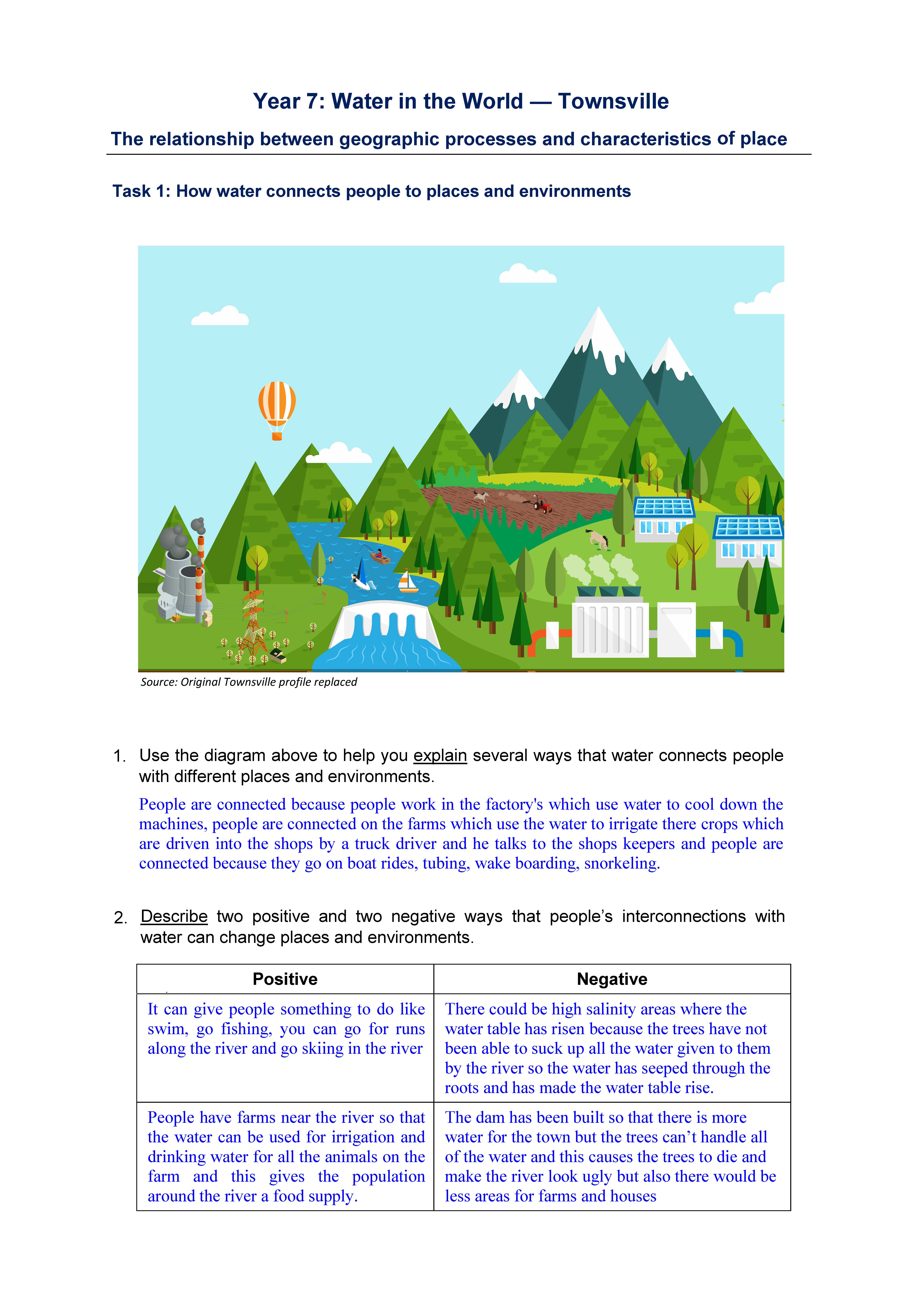 1
Annotation 1
1
Annotation 1
Explains ways water connects people with different places and environments 2 Annotation 2
Describes geographical processes 3 Annotation 3
Describes interconnections between people and water 4 Annotation 4
Describes how people’s interconnections change places and environments 5 Annotation 5
Uses some geographical terminology
-
Annotations
-
1
Annotation 1
Explains ways water connects people with different places and environments -
2
Annotation 2
Describes geographical processes -
3
Annotation 3
Describes interconnections between people and water -
4
Annotation 4
Describes how people’s interconnections change places and environments -
5
Annotation 5
Uses some geographical terminology
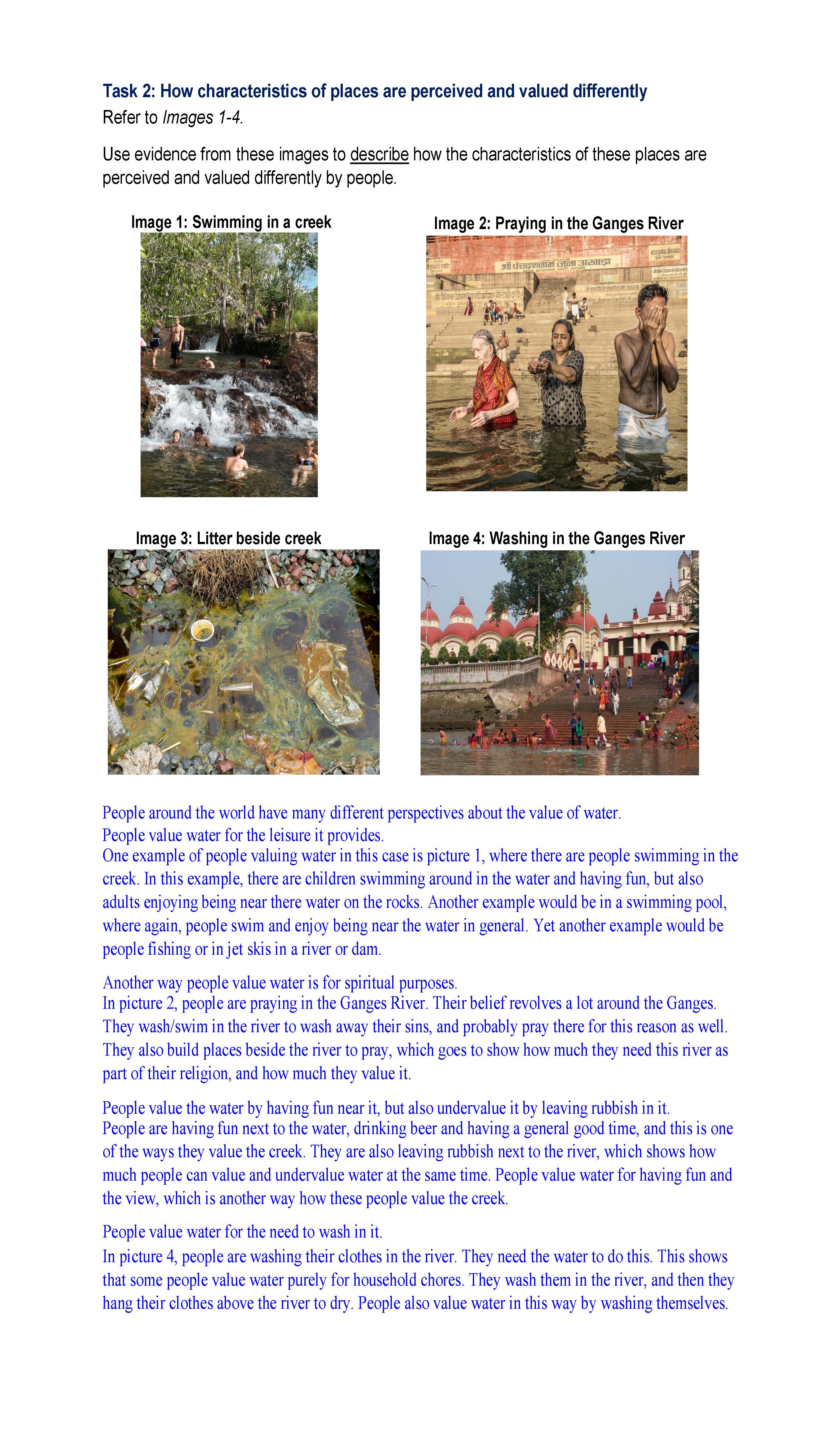 1
Annotation 1
1
Annotation 1
Presents argument about a geographical phenomenon 2 Annotation 2
Describes ways people engage with and value bodies of water 3 Annotation 3
Analyses evidence in geographical images to draw conclusions 4 Annotation 4
Describes positive as well as negative impacts people have on a body of water
-
Annotations
-
1
Annotation 1
Presents argument about a geographical phenomenon -
2
Annotation 2
Describes ways people engage with and value bodies of water -
3
Annotation 3
Analyses evidence in geographical images to draw conclusions -
4
Annotation 4
Describes positive as well as negative impacts people have on a body of water
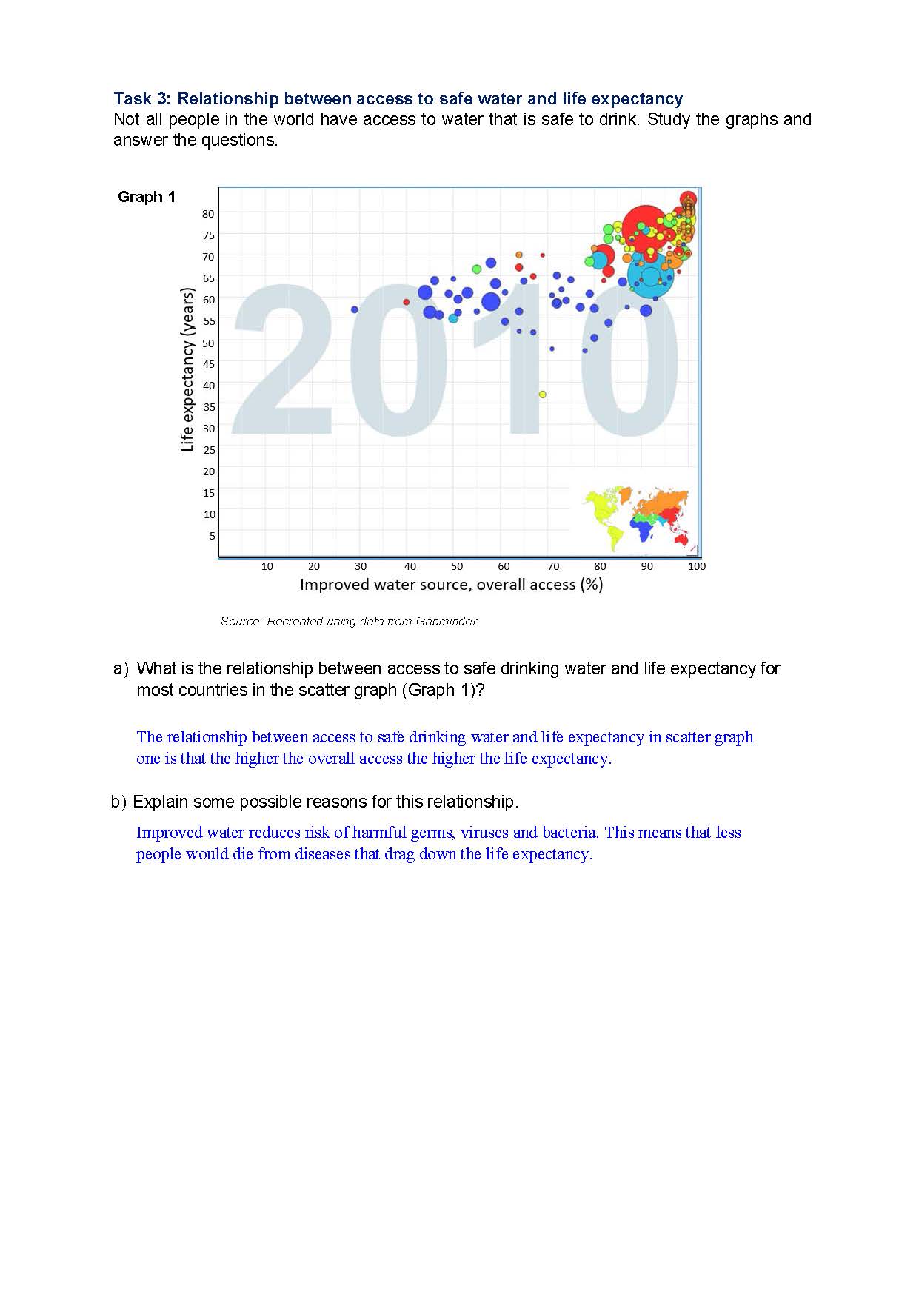 1
Annotation 1
1
Annotation 1
Identifies relationships between the variables, access to safe drinking water and life expectancy 2 Annotation 2
Accurately interprets graphic data to draw conclusions 3 Annotation 3
Explains how access to safe drinking water is connected to life expectancy
-
Annotations
-
1
Annotation 1
Identifies relationships between the variables, access to safe drinking water and life expectancy -
2
Annotation 2
Accurately interprets graphic data to draw conclusions -
3
Annotation 3
Explains how access to safe drinking water is connected to life expectancy
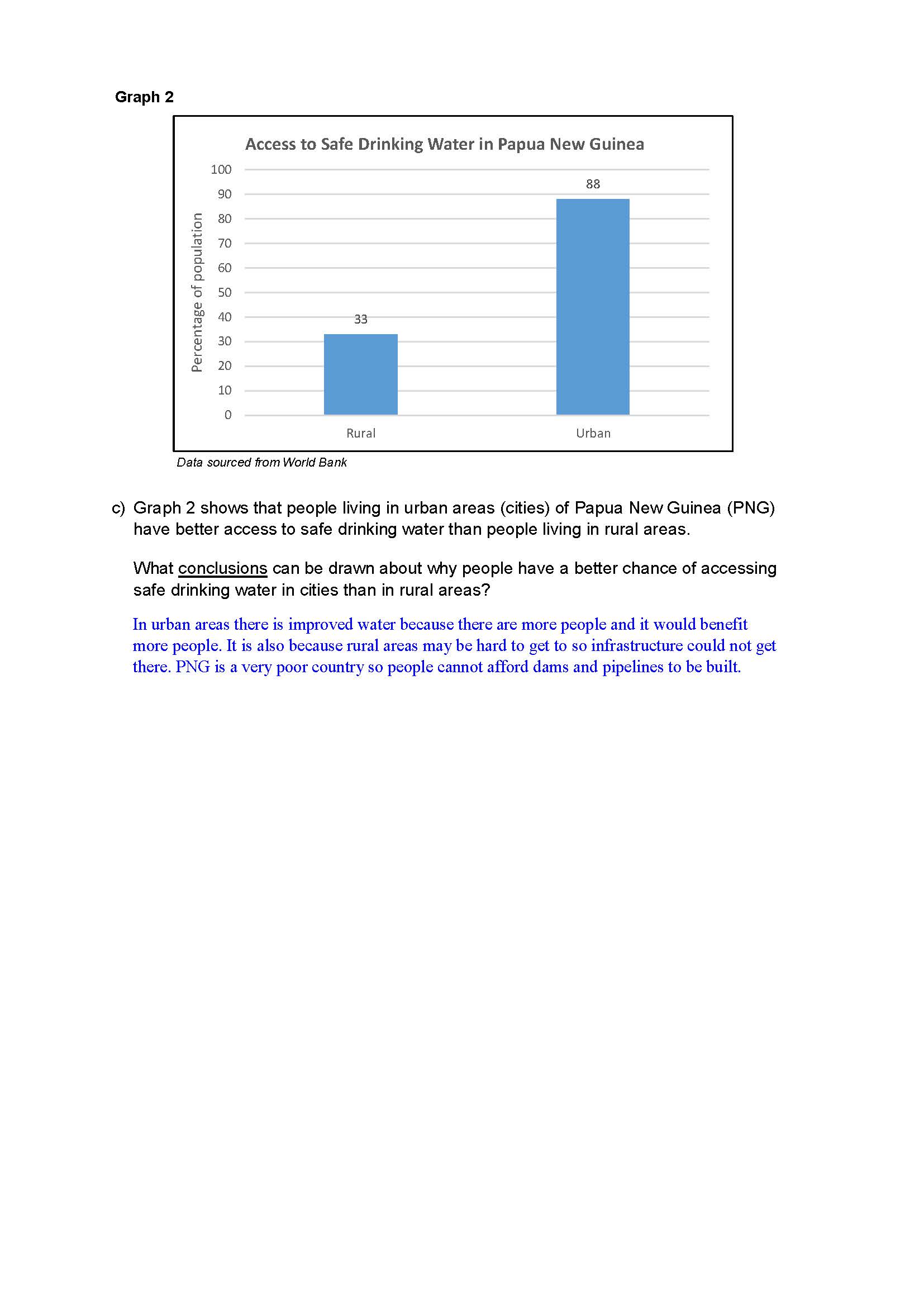 1
Annotation 1
1
Annotation 1
Draws a reasoned conclusion based on the data provided in a graph, using an example
-
Annotations
-
1
Annotation 1
Draws a reasoned conclusion based on the data provided in a graph, using an example
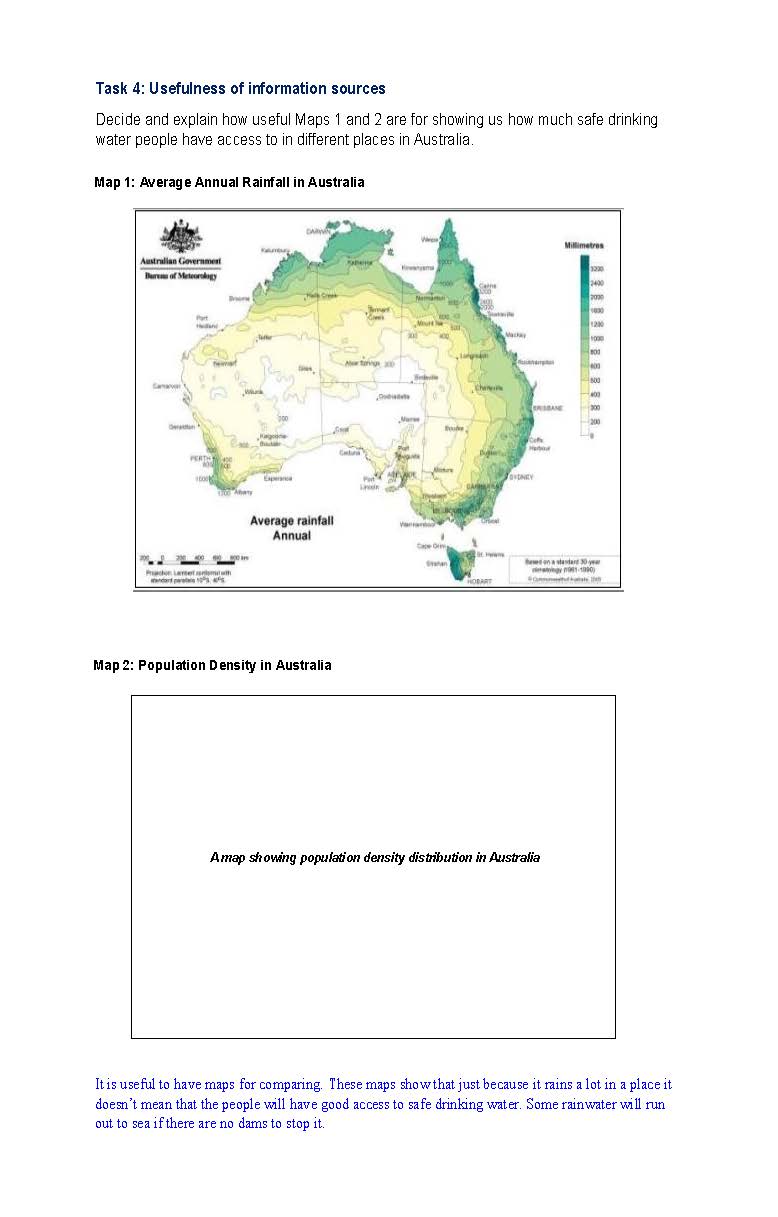 1
Annotation 1
1
Annotation 1
Describes the usefulness and relevance of more than one map to compare data 2 Annotation 2
Interprets information from maps to draw conclusions about connections between rainfall and population
-
Annotations
-
1
Annotation 1
Describes the usefulness and relevance of more than one map to compare data -
2
Annotation 2
Interprets information from maps to draw conclusions about connections between rainfall and population
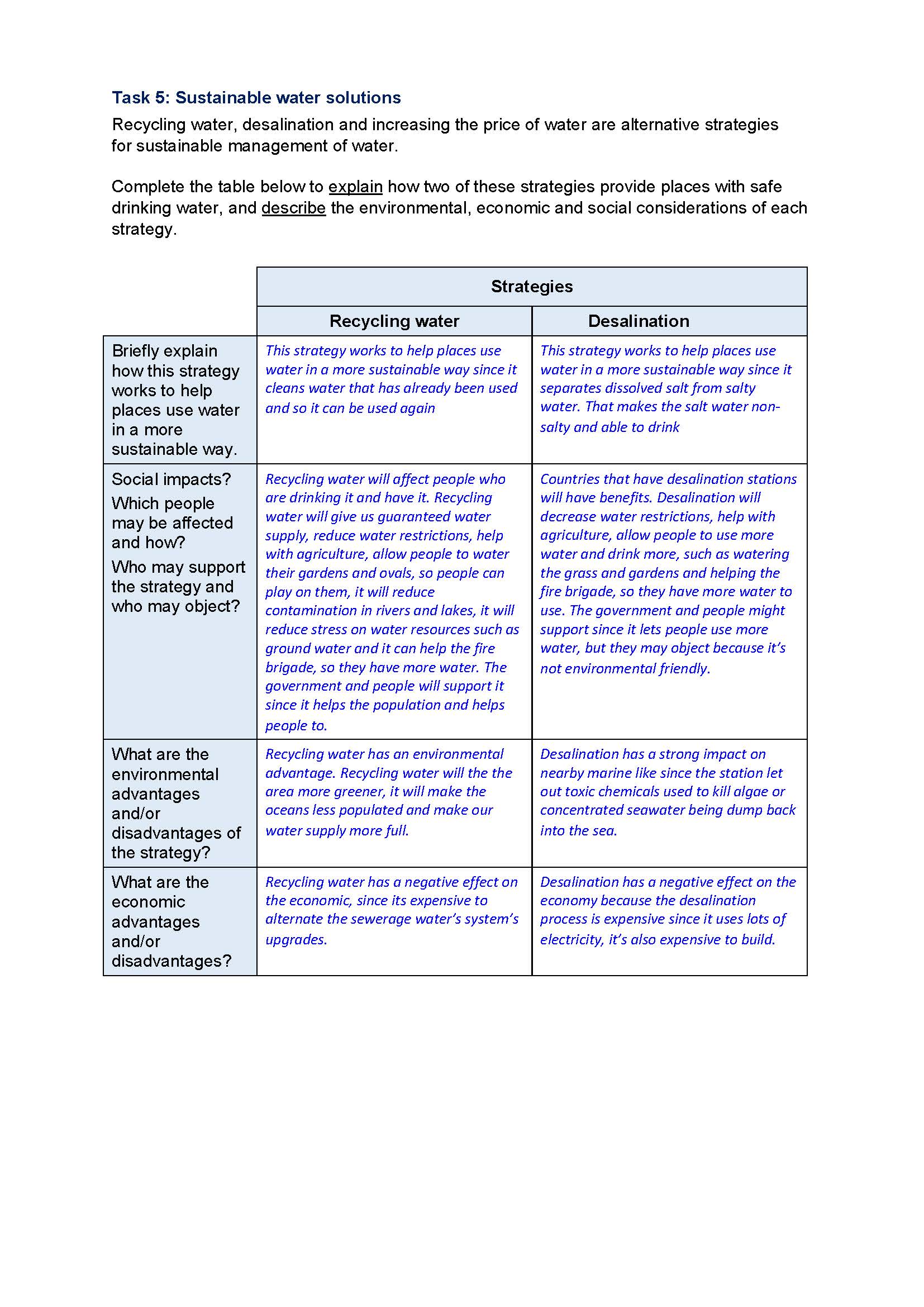 1
Annotation 1
1
Annotation 1
Identifies strategies to address the challenge of water sustainability 2 Annotation 2
Explains the processes of water recycling and desalination with some details 3 Annotation 3
Makes a simple connection between the process of water recycling and sustainability 4 Annotation 4
Identifies a range of social benefits and people associated with water recycling and desalination 5 Annotation 5
Identifies positive environmental impacts of water recycling and desalination 6 Annotation 6
Identifies a connection between desalination and the environment 7 Annotation 7
Identifies negative economic effects of water recycling and desalination 8 Annotation 8
Uses relevant geographical terminology
-
Annotations
-
1
Annotation 1
Identifies strategies to address the challenge of water sustainability -
2
Annotation 2
Explains the processes of water recycling and desalination with some details -
3
Annotation 3
Makes a simple connection between the process of water recycling and sustainability -
4
Annotation 4
Identifies a range of social benefits and people associated with water recycling and desalination -
5
Annotation 5
Identifies positive environmental impacts of water recycling and desalination -
6
Annotation 6
Identifies a connection between desalination and the environment -
7
Annotation 7
Identifies negative economic effects of water recycling and desalination -
8
Annotation 8
Uses relevant geographical terminology


